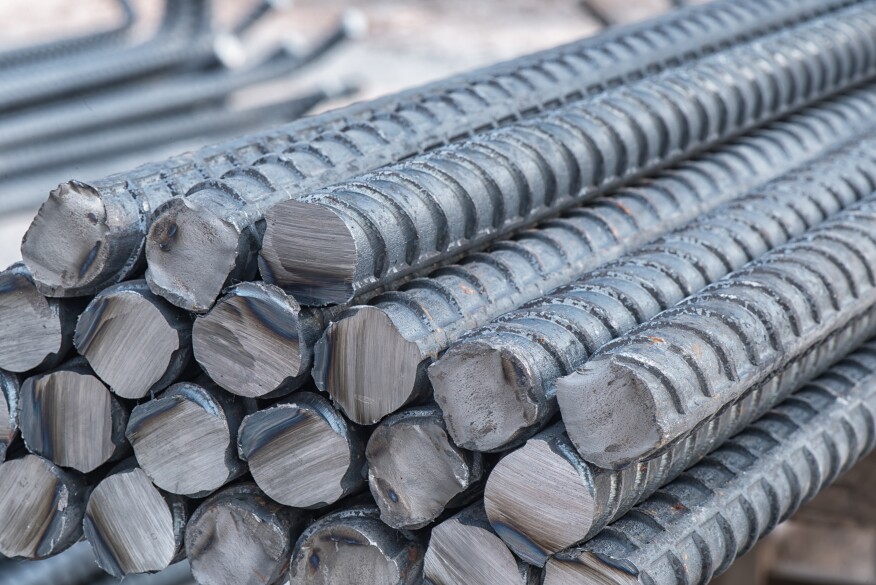
— NEWS —
 Cellphone 400-0532-177
Cellphone 400-0532-177 Tel:400-0532-177
Cellphone:400-0532-177
WhatsApp:008618253285200(Wechat)
Email:sales01@star-trowel.com
Company News
Time:2024-11-06 15:47:11
 Adobe Stock/Peangdao
Adobe Stock/PeangdaoAlthough on larger projects iron-workers will place the reinforcing steel, most contractors place some reinforcement. Getting it in the right place and keeping it there during concrete placement is critical to the structure's performance. Reinforcement should be placed as shown on the placing drawings. There, the detailer will indicate the number of bars, bar lengths, bends, and positions.
One important reason for placing the reinforcing steel properly is to achieve the right amount of concrete cover—the amount of concrete between the reinforcing steel and the surface of the concrete member. Cover is the single most important factor in protecting reinforcing steel from corrosion. Cover is also necessary to assure that the steel bonds to the concrete well enough to develop its strength. The requirements for minimum cover are usually listed in the project specifications or shown on the drawings. Where not specified, the minimum cover for cast-in-place concrete is specified by the ACI 318 Building Code.
What's important to remember is that the design of the structure is based on having the steel in the right place. Incorrect reinforcing steel placement can and has led to serious concrete structural failures. For example, lowering the top bars or raising the bottom bars by ½ inch more than that specified in a 6-inch-deep slab could reduce its load-carrying capacity by 20%.
Placing reinforcement atop a layer of fresh concrete and then pouring more on top is not an acceptable method for positioning. You must use reinforcing bar supports, which are made of steel wire, precast concrete, or plastic. Chairs and supports are available in various heights to support specific reinforcing bar sizes and positions. In general, plastic accessories are less expensive than metal supports. The Concrete Reinforcing Steel Institute's Ready Reference Reinforcing Steel Resource Guide or the classic Placing Reinforcing Bars has three tables that show most of the currently available supports in the various materials and describing the situation where each is most effectively used.
Simply placing the bars on supports is not enough. Reinforcing steel must be secured to prevent displacement during construction activities and concrete placement. This is usually accomplished with tie wire. Tie wire comes in 3- or 4-pound coils. Wires are placed in a wire holder or a reel is suspended from the worker's belt for accessibility. The wire is typically 16½- or 16-gauge black, soft, annealed wire, although heavier reinforcement may require 15- or 14-gauge wire to hold the proper position of the rebar. A variety of tie types (ties are basically wire twists for connecting intersecting bars), from snap ties to saddle ties, are used in the concrete reinforcing industry. CRSI's Placing Reinforcing Bars illustrates the types of ties and describes the situation where each is most effectively used.
For tying epoxy-coated bars, use PVC ties (available from American Wire Tie). Proprietary snap-on ties are also available, such as the Speed-Clip Rebar Tie from Con-Tie Inc. This is a simple device that attaches rebar in parallel or at any angle by hand. No tools are required.
When tying bars, there is no need to tie every intersection—every fourth or fifth is normally sufficient. Remember that the tie contributes no strength to the structure, so more are necessary only when the steel might become displaced during concrete placement. Be sure to keep the ends of the tie wires away from the surface of the concrete where they could rust. For preassembled mats or reinforcing steel, tie enough intersections to make the assembly rigid enough for placing—typically every intersection around the outside and every other in the middle of the mat. Tack welding the intersections is typically not permitted, because it reduces the cross section of the bars.
Tolerances on placement
Although bars should be placed as close to the specified position as possible, there will always be a little bit of variation. The tolerances on rebar position, as defined by ACI 117, “Tolerances for Concrete Construction and Materials,” are shown in the table. Remember what this means: a tolerance, according to ACI 117, is the permitted variation from a given dimension—in other words, how far off the rebar actually is from what's shown in the drawings. So, for example, if the clear distance between the outside of a reinforcing bar and the face of a 6-inch-wide concrete beam is specified to be 2 inches, the tolerance allows it to be no less than l 5/8 inches.
The tolerance on the position of longitudinal bars, is pretty loose— ±3 inches. That's because the exact position is not that critical, as long as the proper cover is maintained and the specified number of bars are included.
Related recommendations